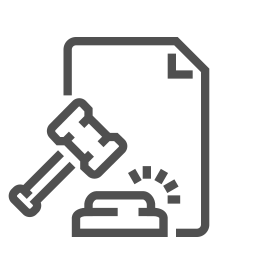Solitary Confinement by any name is Solitary Confinement
The New Mexico Corrections Department (NMCD) has engaged in something of a shell game around the topic of solitary confinement. Specifically, they seem to believe that by referring to the practice as placement in a Restrictive Housing Unit (RHU), somehow no one will notice, and all will be fooled. We noticed, and solitary confinement by any other name is still solitary confinement.
Common Meaning of Solitary Confinement
What is solitary confinement? A dictionary definition reads as follows: “the isolation of a prisoner in a separate cell as a punishment.” The National Commission on Correctional Healthcare (NCCHC) provides a more expansive definition:
“Solitary confinement is the housing of an adult or juvenile with minimal to rare meaningful contact with other individuals. Those in solitary confinement often experience sensory deprivation and are offered few or no educational, vocational, or rehabilitative programs. Different jurisdictions refer to solitary confinement by a variety of terms, such as isolation, administrative, protective, or disciplinary segregation, permanent lockdown, maximum security, supermax, security housing, special housing, intensive management, and restrictive housing units. Regardless of the term used, an individual who is deprived of meaningful contact with others is considered to be in solitary confinement”.[i]
Rename or Completely Deny it’s Existence
NMCD plays games with the terminology. It tries to trivialize the reality of solitary confinement by renaming less menacing names such as administrative segregation, protective custody, restrictive housing and among my favorites, “special housing”. Special housing must refer to the room service to which NMCD employees compare solitary confinement.
In renaming solitary, NMCD and its employees will then try to deny solitary confinement exists at all. One NMCD employ testified at the legislative hearings:
I don’t believe that’s been used in the United States since probably 1900, early 1900, 1912…
This is clearly the company line. Returning to the NCCHC definition, what would you call a situation where an inmate is confined to a cell 22, 23 and often 24 hours a day. While so confined they are denied contact with any other human beings, they do not get any rehabilitative services, they are denied phone calls at times even with their attorney.
Anyone with any sense and basic human morality would recognize this for what it is. Not so for NMCD, instead as put even more harshly by yet another outspoken NMCD employee proponent of solitary confinement:
I’ve never seen an inmate in solitary confinement. Not one.··Not one.··The amount of rights, the privileges that these guys have is unbelievable. They have more rights and privileges than I do as a private citizen.
Let that sink in. An NMCD, no doubt trained and taught this absurd belief by the higher ups, suggests that being in small cage 22 to 24 hours a day with no meaningful human contact, no privileges, no phone calls, no rehabilitation, no education has it just as good as the average citizen. This quote alone screams for an overhaul of NMCD from the top down.
Its Not Room Service
In the estimation of the United Nations solitary confinement surpassing 15 days constitutes torture. Other international human rights organizations view the practice in a similar vein. In correctional settings in the State of New Mexico, inmates are often kept in such isolation for periods far exceeding 15 days, going into months and even years. They do this by redefining and even more cynically renaming solitary confinement. In legislative hearings, NMCD employees said such things as solitary is like room service. In fact, 2 NMCD employees stated that it was like room service one putting it this way:
I’ll tell you that restrictive housing is truly perceived as a vacation, getting room service
NMCD’s level of cruelty and cynicism is unacceptable in any society, most certainly in New Mexico.
Solitary Confinement in the New Mexico Corrections Department
In a recent article in the Albuquerque Journal, an article entitled “New NM law requires state prisons to track use of restricted housing units”,[ii] journalist Elise Kaplan raises some of the central issues arising in the wake of the passage of a new law governing the use of solitary confinement. In House Bill 364, known as the Corrections Restricted Housing Act, which bans its use for juveniles and those with mental illness, there was also a provision for the production by the Corrections Department of quarterly reports on numbers of inmates held in solitary.
The first quarterly report was released in October and covered the period July 1, to September 30, 2019. The article by Kaplan notes that one inmate was held for 9 months in isolation, spending 22 hours alone in his cell. It is not an infrequent occurrence that that New Mexico Inmates are held well beyond the 15 days the UN has deemed torture.
In December of 2018, two inmates, both of whom’s families are represented by Collins & Collins, P.C., hung themselves on the same day, in the same prison, in the same solitary conditions. Both inmates had a history of mental health issues and yet they were kept in a restrictive housing unit (solitary) for weeks, until they both succumbed to their untreated mental illnesses and took their own lives. Yes, that is right, they were placed in solitary confinement and given no mental health treatment despite severe mental illness.
These were by no means the only two inmates who, under similar circumstances, committed suicide while housed in a New Mexico Corrections Department-run facility. As the aforementioned article notes, another inmate also recently took his life. In addition, this problem manifests at local correctional facilities—county jails—as well.
The Reasons Cited for the Practice of Confinement in Isolation
If you ask corrections staff the reasons why a specific inmate is placed in solitary confinement or restrictive housing, a number of responses may result, among them;
- Awaiting transfer to another correctional facility (“pending transport”).
- For the safety of the inmate
- County Hold
- For Disciplinary Infractions
Awaiting Transfer
In our experience, in the first instance, there’s a fair amount of game-playing that takes place on the part of Correctional Staff. Say, for example, an inmate files a bunch of grievances or a law-suit. In retribution, they can merely transfer that inmate to the Central New Mexico Correctional-RDC for “evaluation” or “reclassification” then hold the inmate for an unspecified period of time with status listed as “pending transport”. The inmate might be held for weeks, or months, in isolation awaiting transfer to another facility. That same inmate after being held awaiting transfer may then end up at the very same facility from which he was to be “transferred”
In short, the pretense a transfer and reclassification is used to punish inmates for filing a grievance in accordance with NMCD rules and the Federal Prison Litigation Reform Act. It might be asked why any bu the most dangerous prisoners would need to be held in solitary for reclassification and/or transfer to another facility.
Safety of the Inmate
For reason number two, the safety of the inmate, a plethora of possibilities exist, among them; gang affiliation, threats against the inmate, health reasons, etcetera. Again, there’s a lot of room for maneuver and the main point of focus should be whether or not, under any of these circumstances, inmates should be held for months or even years in solitary a de facto form of solitary confinement. Policy is rather clear that that should never happen, and yet it does. For those who care to look for themselves, the appropriate section in NMCD Policy is CD-090100 Inmate Discipline. [iii]
County Holds
For item number three, County Holds, the specific policy is CD-143500 Safekeeping of County Jail Inmates.[iv] This specifically allocates space in New Mexico Correctional Department facilities for those inmates whom local county jails lack the appropriate services to accommodate. An example would be inmates with severe mental health issues as in the case of one of the inmates mentioned above who took his own life at the CNMCF in Los Lunas. He was, again, placed in isolation 22 hours a day—he hadn’t even been convicted, and he died.
Disciplinary Infractions
Lastly, placements in Restrictive Housing Units for Disciplinary Infractions. The policies governing infractions and possible commensurate punishments meted out are covered in the “Inmate Discipline” policy section mentioned above. Suffice it to say that, in our experience, the policies as they are set forth are not strictly adhered to at the facility level and there’s a fair amount of meandering around policies that takes place. If you ticked off a classification officer or someone in the administration or you’re bucking the system, they will find room for your punishment under this policy section. Understanding all of the above, no is no reason to believe that fair and just discipline ever enters the determination of whether or not to place an inmate in solitary.
Our Treatment of Prisoner Defines Us
A variety of authors and thinkers, across centuries, have discussed the proposition that a society is defined by how it treats the least of its citizens; the poor, the hungry, the mentally ill, the infirm and, yes, prisoners who often are often those same aforementioned poor, hungry, mentally ill or sick. The treatment we accord them defines us more than it defines them.
Contact your legislator.
i. https://www.ncchc.org/solitary-confinement
iii. https://cd.nm.gov/wp-content/uploads/2019/06/CD-090100.pdf
iv. https://cd.nm.gov/wp-content/uploads/2019/06/CD-143500.pdf


